Babington Hospital, Belper's Old Workhouse
Updated: Thursday, August 16, 2018 | Belper Research Website now has a Twitter Account and Facebook Group
This fine old building was once a workhouse for the poor. George Benson Strutt of Belper sold two acres of land for £750 for the building of this former Workhouse. On completion in 1840 it had cost £8,700. Just how much is it worth today? [Enough to make it a target for construction firms, who in 2018 are about to create yet more apartments on the site!]
Information About The Workhouse
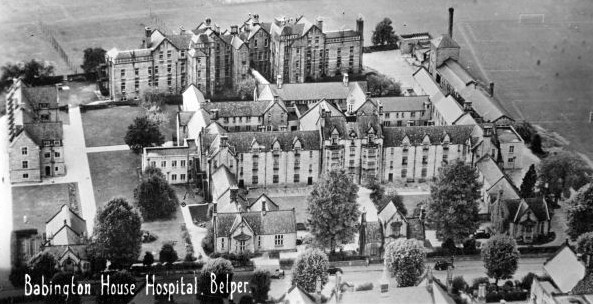
Belper Poor Law Union formally came into existence on 5th May 1837. Its operation was overseen by an elected Board of Guardians, 47 in number, representing its 32 constituent parishes.
The new Board of Guardians held its inaugural meeting in May 1837 at the Lion Inn, Bridge Street. The priority of erecting a new workhouse was agreed upon, with the capacity of the three existing parish workhouses in the Union being inadequate.
A report in November 1837 by one of the Union's medical officers highlighted the poor state of medical provision at the time. One of the sick poor, "aged 78, has lain upon a squab in a stockinger's room for the last four months — he was supposed to have had a paralytic stroke, but his case has turned out to be a fracture of the neck of the thigh bone."
The architects appointed to design the workhouse were the prolific partnership of George Gilbert Scott and William Bonython Moffatt who were also responsible for the workhouse at Chesterfield. Because of changes in the site, and in the architects' design, there were several delays in starting construction. There were also problems during the building work, including the bankruptcy of the building contractors.
The building was eventually completed in September 1840 on a 2.5 acre site at Babington Meadow which had been purchased for £750 from local landowner George Benson Strutt.
The building was constructed
from local Derbyshire stone at a cost of £8,700 and was intended to
accommodate up to 300 inmates. The location 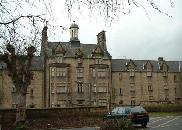 and layout of the workhouse
can be seen on the 1913 map below.
and layout of the workhouse
can be seen on the 1913 map below.
There was, however, considerable disruption and dislike of the new workhouses in England, and there was a spate of attacks and fires around the country. In Belper, the workhouse was damaged by a suspicious fire in October 1841. The large crowd who gathered to watch not only refused to put it out, but threatened those who did.
 More about Belper's Old Workhouse on this excellent website
More about Belper's Old Workhouse on this excellent website
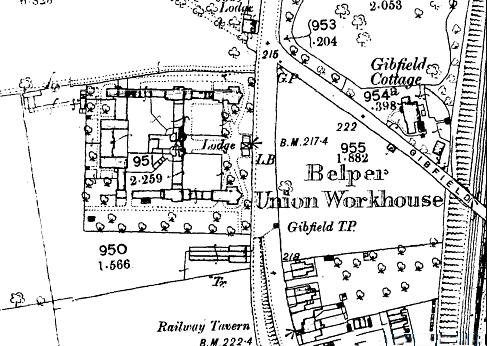
Today the Workhouse is used as a Hospital, and is to be found on the outskirts of Belper, on the A6 Derby Road.
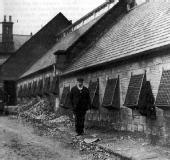 |
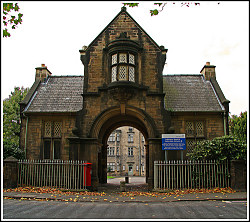 |
|---|---|
| Workhouse in early 1900's | Gatehouse of Workhouse Today |
Below is a report into conditions at the workhouse which were spartan to say the least:
"Sick and poor of Derbyshire were badly treated at workhouse"
A Workhouse which operated in 19th-century Derbyshire has been described as like a "prison". An academic study into Belper's workhouse from 1851 and 1901 looks at the conditions of the building and quality of life for the people who were admitted
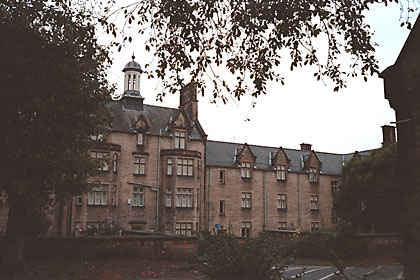 The study was carried out by University of Leicester postgraduate researcher Christine Seal, who also compared the workhouse in Belper to another in Cheltenham.
The study was carried out by University of Leicester postgraduate researcher Christine Seal, who also compared the workhouse in Belper to another in Cheltenham.
Dr Seal decided to investigate the former workhouse, in the building now known as Babington Hospital, in Derby Road, after tracing one of her husband's relatives to it during family history research.
But she said the workhouse, built by the area's poor law union for those unable to support themselves, treated the disabled, sick and aged against national recommendations.
She said: "On admittance to the workhouse, the paupers' clothing was replaced with workhouse clothes of a coarse nature. The male paupers were separated from the females and the mothers were separated from their children.
"Each workhouse had a strict regime. Food was monotonous, including bread, cheese, gruel, thin soup and the occasional piece of meat. The conditions weren't good from day one, although they did start to improve and become not quite so horrendous."
Dr Seal's study, published in the journal Family and Community History, Volume 13, also looked into the case of a Belper woman called Harriet Toplis. Miss Toplis was admitted to the workhouse more than 20 times and sent to jail at least twice for different misdemeanours during her stays. She also gave birth to three children while staying there and is described as a "very bad character" by the board of guardians overseeing the workhouse. It was common practice for paupers to be admitted frequently to the workhouse but for short stays.
Dr Seal said Miss Toplis was first described on admittance to the workhouse, in 1840, as 18, single and destitute and later referred to as a "common prostitute".
She said: "You can track her history in the workhouse for about 20 years and how she was sent to prison, so I've dedicated a whole chapter to her. The records show her leaving the workhouse on May 15, 1841, to provide for herself – but we find her applying just five days later to be readmitted. Because of that, the guardians ordered her meat dinners to be withheld from her, as this was one of the rules.
"She gives an interesting insight into how harsh conditions were."
Dr Seal said conditions for many in Britain at the time were almost as bad as within the workhouse but many labourers tried to find work outside them "to avoid the stigma of workhouse accommodation."
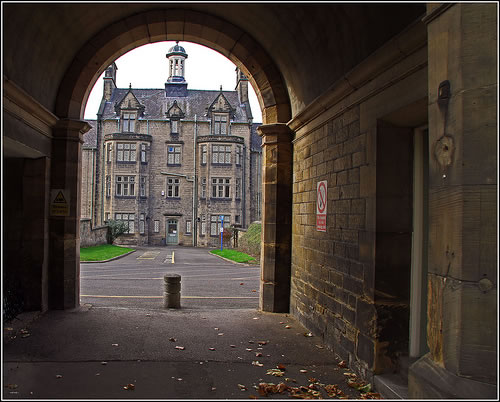
Today's Babington Hospital seen through the Gatehouse
Contents
Records
- Census
1851-1891 - Polls & Taxes
Early Records - Parish Records
From LDS Website - Military Records
of Derbyshire - Burials
And Memorial Records - Baptisms
From Various Sources - Marriages
Belper & Local - Documents
Matlock Record Office






